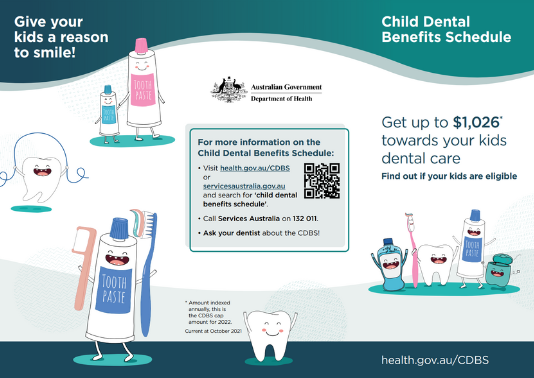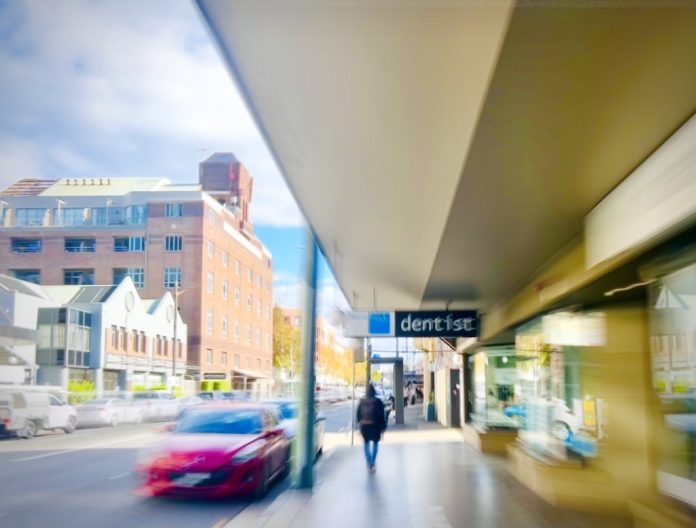In 2008, Australia’s Department of Health had an empty box to tick.
Introduced by the Rudd government, The Dental Benefits Act (2008) promised disadvantaged Australians subsidised dental services. The Health and Aged Care sector needed to think fast. A new Medicare scheme had to be established nationwide.
On January 1, 2014, the Child Dental Benefits Schedule (CDBS) was established. As set out in the Fourth Review on the Dental Benefits Act, the CDBS aims to provide accessible, long term and systemised oral health care to families in financial need funding up to $1052 worth of dental care benefits over 2 years. The Services Australia website states that children aged between 0 and 17 years must be entitled to Medicare, and their families must receive a relevant Centrelink payment, such as the Single Parenting Payment or the Family Tax Benefit. On January 1, 2014 that empty box was finally ticked.
But what is a tick worth when it ignores 60 per cent of eligible children and the $1.7 billion in benefits they are entitled to.
Usage of the CDBS
In 2018, the percentage of eligible children using the scheme was only 37.9 per cent. While there has been no data detailing usage of the scheme in more recent years, the Fourth Review on the Dental Benefits Act estimated participation would reach 40.3 per cent by 2022.
“I haven’t noticed any increase,” Anita Cui, who works as a dental hygienist in Sydney’s southern suburbs, said. Anita is her practice’s first point of call when it comes to CDBS patients.
So why the doubt?
Services billed under the CDBS by Category
The decline in the number of services billed under the CDBS since 2018’s peak indicates that the percentage of utilisation may be at a standstill, or worse…the percentage may have fallen.
“People just aren’t aware!” Anita said.
Despite describing the scheme as “effective”, Anita said “people are still surprised” when she informs patients of their eligibility.
According to the Services Australia website, parents are sent a letter informing them of their child’s eligibility. Parents are also able to check through their MyGov account or by contacting Medicare directly. The Health and Aged Care department has run no official public campaign to promote the scheme.

Laura Bethell couldn’t remember if she had received a letter informing her of her children’s eligibility, revealing that she “found out about the scheme in a group for solo mums”.
As a single mother to two, Laura has been consistently using the CDBS, taking her son and daughter to regular 6-month check ups.
“Financially, it has been a big help,” she said. “I’m sure there would be a lot of people who couldn’t afford to take their children to the dentist…at least not every 6 months.”
Parents and dental practitioners describe the scheme as helpful so it is difficult to imagine why usage of the CDBS is so low. However, by calling into question the systems surrounding the scheme, answers begin to emerge.

“For children 13 and over, the check up and clean price is $240. From 5-13, it’s $210,” Anita said.
While costs vary from practice to practice, 97 per cent of private CDBS appointments have been bulk billed according to the Australian Dental Association (ADA). This means there is no charge for the patient as it is Medicare who pays the dentist for the service. And therein lies an issue…
Dentistry is expensive.
Anita’s Private Fee vs CDBS Benefit
According the Australian Institution of Health and Welfare (AIHW), the average CDBS benefit paid by Medicare was $60 in 2021. With an average of four bulk billed services a year, dentists receive approximately $240 per CDBS patient. Meanwhile, per capita expenditure on private appointments in 2021 was $432, almost double the CDBS amount.
If private dentists were to accommodate 100 per cent of eligible CDBS patients, and continued to bulk bill 97 per cent of services, the industry would lose $537 million per year in gross income.
Only just increasing the bulk billing incentives for GPs in the 2023-24 Federal Budget, increasing the rebate for a scheme with less than 50 per cent usage is not only last on the list of Medicare’s priorities, but costly.
So what about public dentistry? Surely they could lend a hand?
Percentage of Private and Public Dentists in Australia (2020)
Unlikely…
With few public practitioners, the average waiting time for a dental appointment reached over 460 days in 2023 according to the Sydney Morning Herald. Informing an extra 1.7 million children of their CDBS eligibility would likely make waiting lists larger, to the point where some patients would no longer be entitled to public dental care by the time they were able to see a dentist.
Too expensive and under-resourced, the CDBS does not have the ability to cover 100% of eligible patients. And unfortunately, those who the CDBS fails tend to be the ones who need the scheme the most.
Ranked as the 11th most disadvantaged socioeconomic area in 2021, almost half of the children in the Northern Territory are eligible for the CDBS. Yet, the Fourth Review on the Dental Benefits Act reveals the area has consistently had the lowest rates of usage since the schemes start in 2014 through to 2017. With services in the Northern Territory falling by 708 between 2017 and 2021 (AIHW), these rates do not appear to be increasing.
Remote Australia is also suffering. According to the ABS’ Socioeconomic Index of Relative Disadvantage, rural areas tend to be of lower socioeconomic status then of urban areas, meaning they should have higher rates of CDBS usage.
However, the gradual increase in preventable dental related hospitalisations amongst very remote children suggests access to dental care remains unequal . Children in rural areas are also more likely to experience such hospitalisations.
Preventable Dental Hospitalisations per 100,000 of Australia’s Population
Approaching ten years of existence, the CDBS is still young. But, this is no excuse. Expected usage of the scheme should not be 40.3 per cent, but 100 per cent. If our government is going to tick a box, it must also take responsibility and accountability for ensuring that the task is completed.
It starts with awareness. Put pressure on our health systems to fulfil their promises by improving the public’s knowledge and understanding of the CDBS. It might take another ten years, possibly more, but at least those who need support will receive the care that they were not only promised, but deserve.


